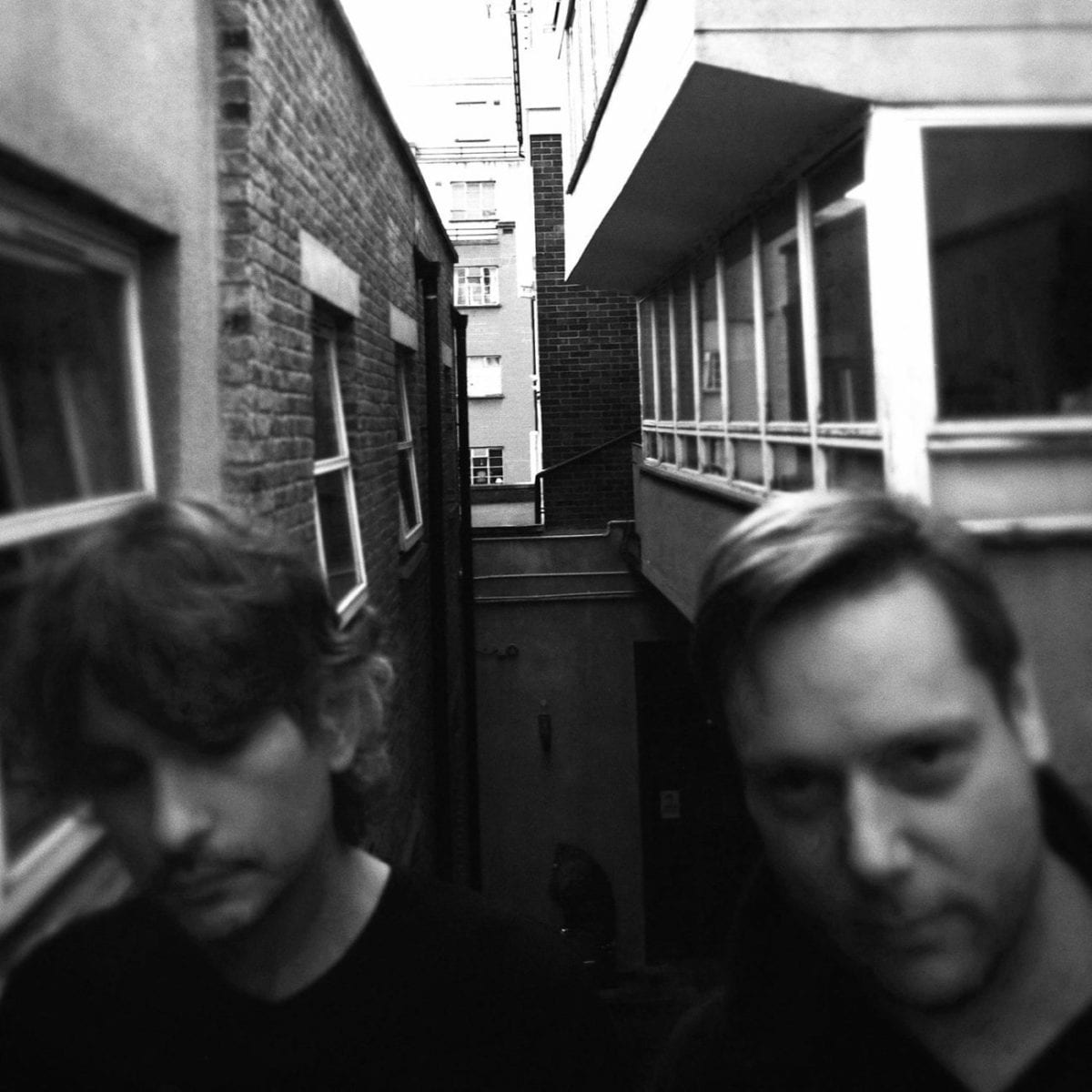
Active under a flurry of monikers and groups, Kyle Martin and Guido Zen are the kind of fearless sound adventurers who like to rush headlong into the unknown, avid to dig up new sonic ores and alloys on their way to carve unparalleled, high-intensity entrancers. As Vactrol Park the pair roam the fringes between dub techno, drone and anxiogenic downtempo electronics sieved through a whelming modular sound design where every element falls into place with optimal accuracy.
After a diptych release on Andy Hogge’s ever consistent ESP Institute and a debut 12″ on Malka Tuti released a few weeks ago, the London-based duo return to the latter with their inaugural album, ‘Music From The Luminous Void‘, which you can now stream through our soundcloud channel ahead of its release on 15th June. Eager to find out more about their unique craft and vision, we caught up with Kyle and Guido to discuss the ins and outs of the album.
Interview by Baptiste Girou

"Our basic aim was to take our sound to further abstract and deeper territories, and at the same to make a record that you can listen to from beginning to end."
Hey chaps, your debut album, ‘Music From The Luminous Void’, is coming out soon on Malka Tuti. Can you tell us more about it? What was your artistic guideline for it?
Thanks for having us! Yes, this is our first album. We made it over the course of the last two years or so in London, where we are based. Our basic aim was to take our sound to further abstract and deeper territories, and at the same to make a record that you can listen to from beginning to end.
You had only released shorter efforts as Vactrol Park to this day. How did you approach the full-length format on this occasion?
Our first two releases on ESP Institute were released as a two-part LP, so it was a bit like an album, and we also worked on the second Brain Machine LP together (with Jon Tye), therefore it wasn’t unfamiliar ground.
However, we tend to work on lots of tracks at the same time. We work on them in tandem, going back to ideas and then eventually we see a release emerge through some of the tracks. When we find tracks that seem to fit together, we try to finish and compile them under a release. These pieces of music felt like an album.
Where did you mainly draw your inspiration for this record?
We are inspired by lots of different kinds of music: it could be drone, slow and hypnotic electronic music, ’70s and ’80s German stuff, dub… But more importantly, as we collaborate with other people quite often, we certainly draw our inspiration from their ideas and modus operandi a lot.
Were the tracks composed with a particular narrative structure in mind?
To be honest, not really! We certainly aim for a certain vibe and atmosphere, but as the tracks developed it became clearer which order they should go in, to try to lead the listener through some kind of trip.
The title reflects the shapeless, vortex-like nature of your music – like a black hole creating matter out of pure energy. How would you define the Vactrol Park sound yourself?
Haha, we don’t think we can top your description, we’ll go with yours! And we should also credit our friend Jon for the title of the LP. We were listening to the mixes together and he showed us this note he had in his notebook and we immediately felt it was just the right title for it.
The atmosphere of the album is dark and immersive, stealthily moving from ambient to drone, via atomized techno on a deep and dubby tip. Creatively speaking, how do you create your tracks? Is there a lot left to improvisation and jamming, or do you have clearly outlined studio protocols to keep you focused?
The tracks take many, many hours to make and there are no rules, but we do have certain processes that we tend to use all the time. Usually, tracks will come from a jam session that we record via a multi-track. Maybe a couple of modular synth lines and a drum machine to start with for example. Then we will just go over it over and over again, recording more layers, trying things, sending sounds out of the computer and back through the synths and effects. Meanwhile we constantly play with the arrangement and mix the track as we go along, keeping the sounds balanced. Eventually we get to a point where the track feels finished.

"As our studio is not soundproof we constantly hear all these sounds from the outside world. Perhaps incorporating some of these noises in the music will make the listener feel our music in a more similar way that we do while we are making it."
The mesmeric, evocative power of your music is an affair of intricate layering but also carefully crafted rhythmic sequences that, through repetition, begin to make the mind hesitate and drop its guard as bars go by. In which order do you record? Is it melodic lines first, drums after? The other way round?
It depends really. When we play together in the studio some of the percussions and the melodies might come up at the same time. Other times we add melodic or rhythmic elements later if we feel the track needs something.
The starting point is often something on the modular synth and we just build from there, but sometimes we change the track quite drastically and just keep one or two sounds and do all the rest again!
The tracks also include a bit of field recordings – like ‘Bells’ which incorporates rain sounds. Is it something you usually or scarcely employ?
Yes, the rain was recorded in Kyle’s garden! Also, ‘Macbeth‘ has some sirens from the streets, which we recorded with the microphone out of our studio window late at night. We have actually used quite a bit of field recording in the past and in fact each of our releases features it somewhere.
We think it’s a nice way to add atmosphere and make you feel like you are in a different space. As our studio is not soundproof we constantly hear all these sounds from the outside world. Perhaps incorporating some of these noises in the music will make the listener feel our music in a more similar way that we do while we are making it.
Is giving the tracks enough amplitude for variation and iteration to happen a reason for the extended length of the tracks?
Actually, not really, we just make the tracks the length that we feel is right. As they result from improvised takes, normally most of the parts evolve over time and the length is dictated from the beginning. As the tracks are quite hypnotic there’s probably a natural feel that they need enough time to develop nicely. However, we might cut sections of the track later on if we feel the music is not interesting enough in certain parts or if the flow is not right. The original takes are often much more extended than the final versions on the records!
It is your second outing on Malka Tuti after the recently published ‘MTOO17’, but releasing an album and an extended player are two very distinct processes, especially given that a full-length piece demands and requires more from a publishing platform, both artistically and financially. What prompted you to put it out through Malka Tuti?
Malka Tuti have been putting out some great releases that we felt were following a similar direction as ours. We like Katzi and his energy, enthusiasm and impeccable taste, and we just felt that it was the right platform for these records. He and Asaf seem to have a clear vision of where they want to take their label.
Where can we find you this summer? Do you have any gigs lined up to support the release of the album?
We have a couple of festivals where we will be playing live, like Monticule in France in June, and Garbicz in Poland in August.
Music From The Luminous Void is released via Malka Tuti on 15th June, pre-order a copy from Juno.
Photo by Garry Hensey
Artwork by Morey Talmor
TRACKLIST
A1. Drops
A2. Novikov’s Notation
A3. Macbeth
B1. Bells
B2. Anstruther
B3. Glove
Discover more about Vactrol Park and Malka Tuti on Inverted Audio.
Vactrol ParkMalka Tuti15 June 2018DubElectronicTechno